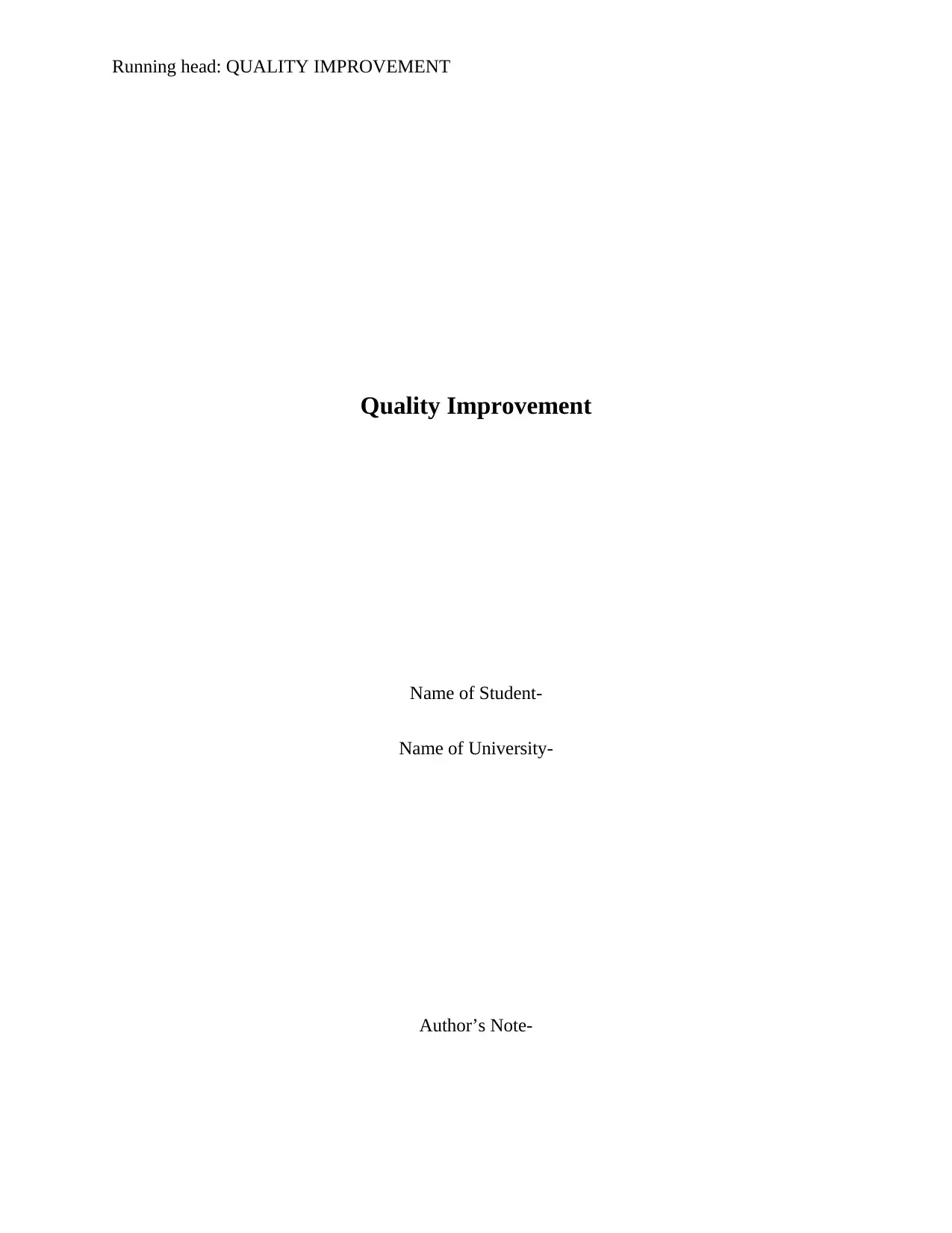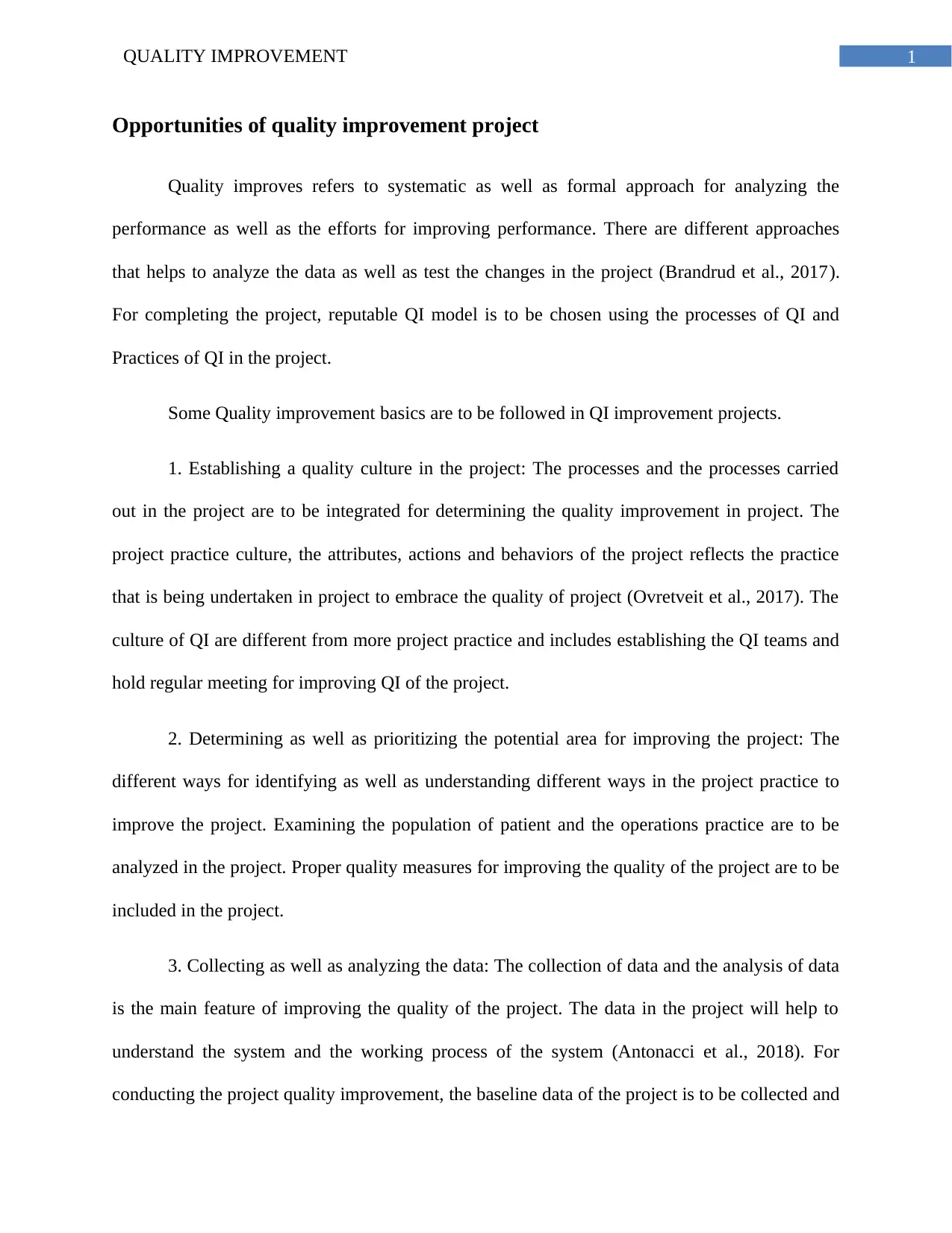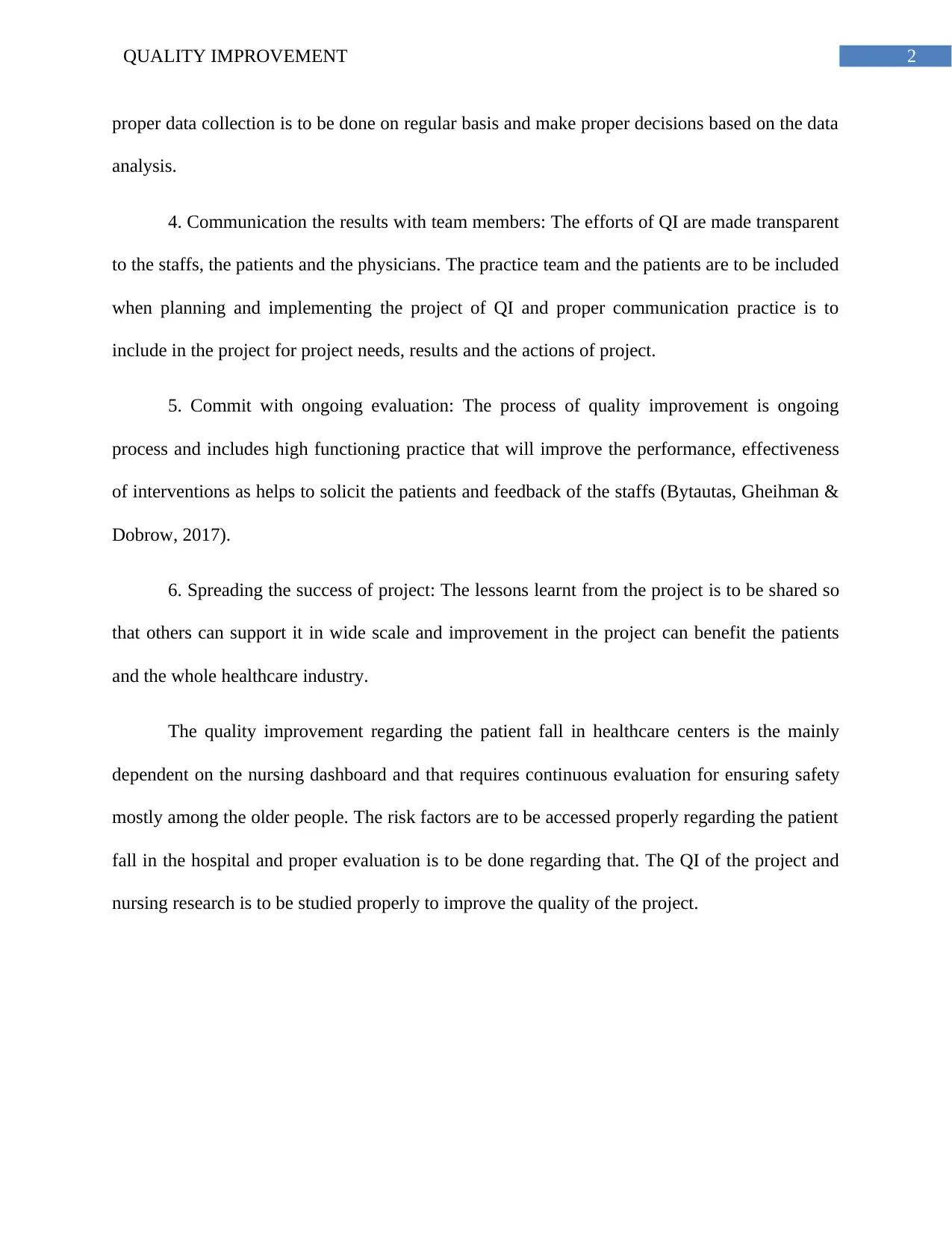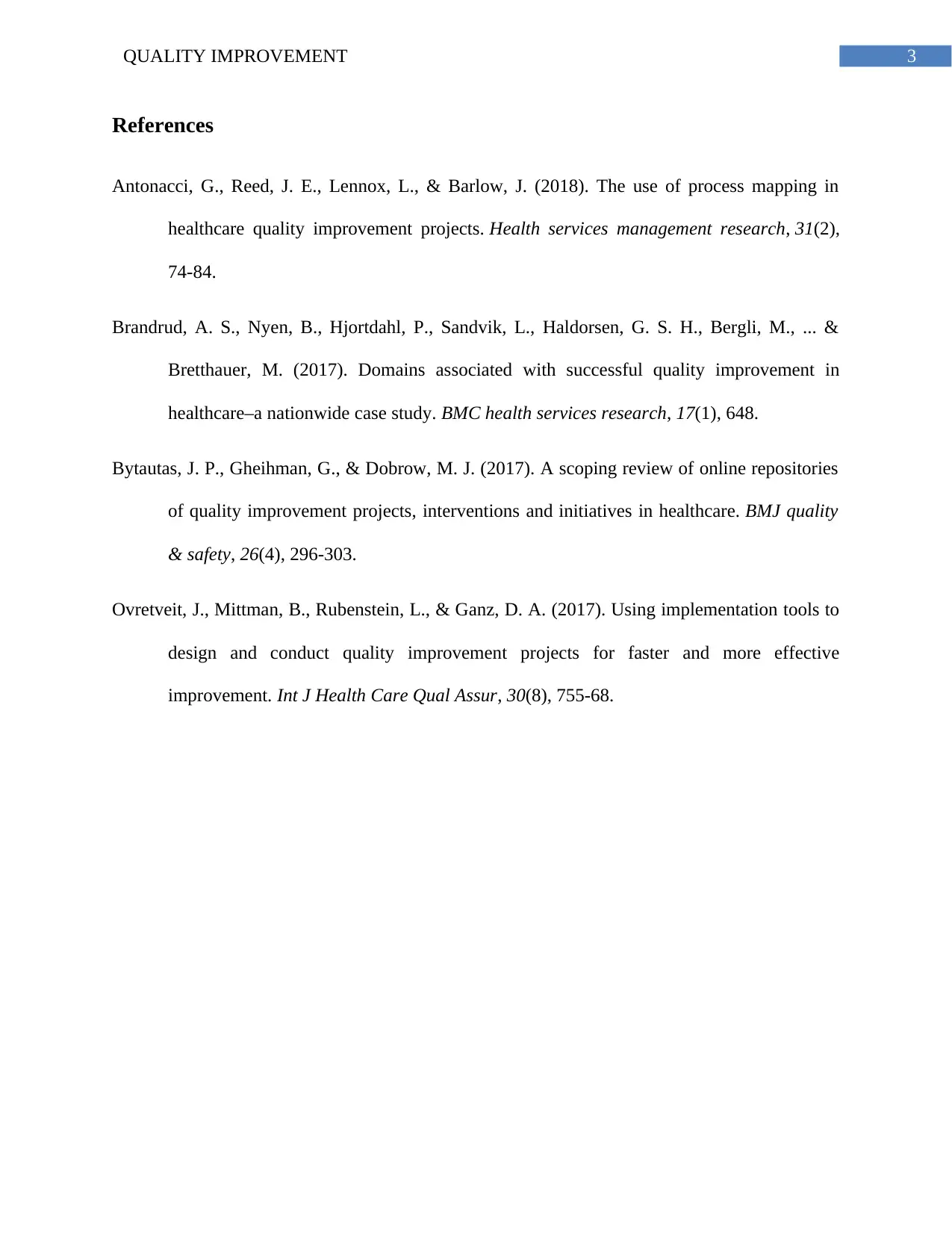Quality Improvement Project: Analysis and Recommendations
VerifiedAdded on 2022/08/23
|4
|819
|15
Report
AI Summary
This report focuses on a quality improvement (QI) project within a healthcare context, emphasizing the systematic approach to analyze performance and enhance outcomes. It outlines key steps such as establishing a quality culture, identifying improvement areas, data collection and analysis, communication of results, ongoing evaluation, and sharing project successes. The project's core revolves around patient safety, specifically addressing patient falls in healthcare centers and the role of nursing dashboards. The report highlights the importance of assessing risk factors, studying QI and nursing research, and using data to inform decisions. References to relevant literature are included to support the project's methodologies and findings. The goal is to provide insights into how QI processes can improve healthcare quality and patient outcomes.
1 out of 4











![[object Object]](/_next/static/media/star-bottom.7253800d.svg)